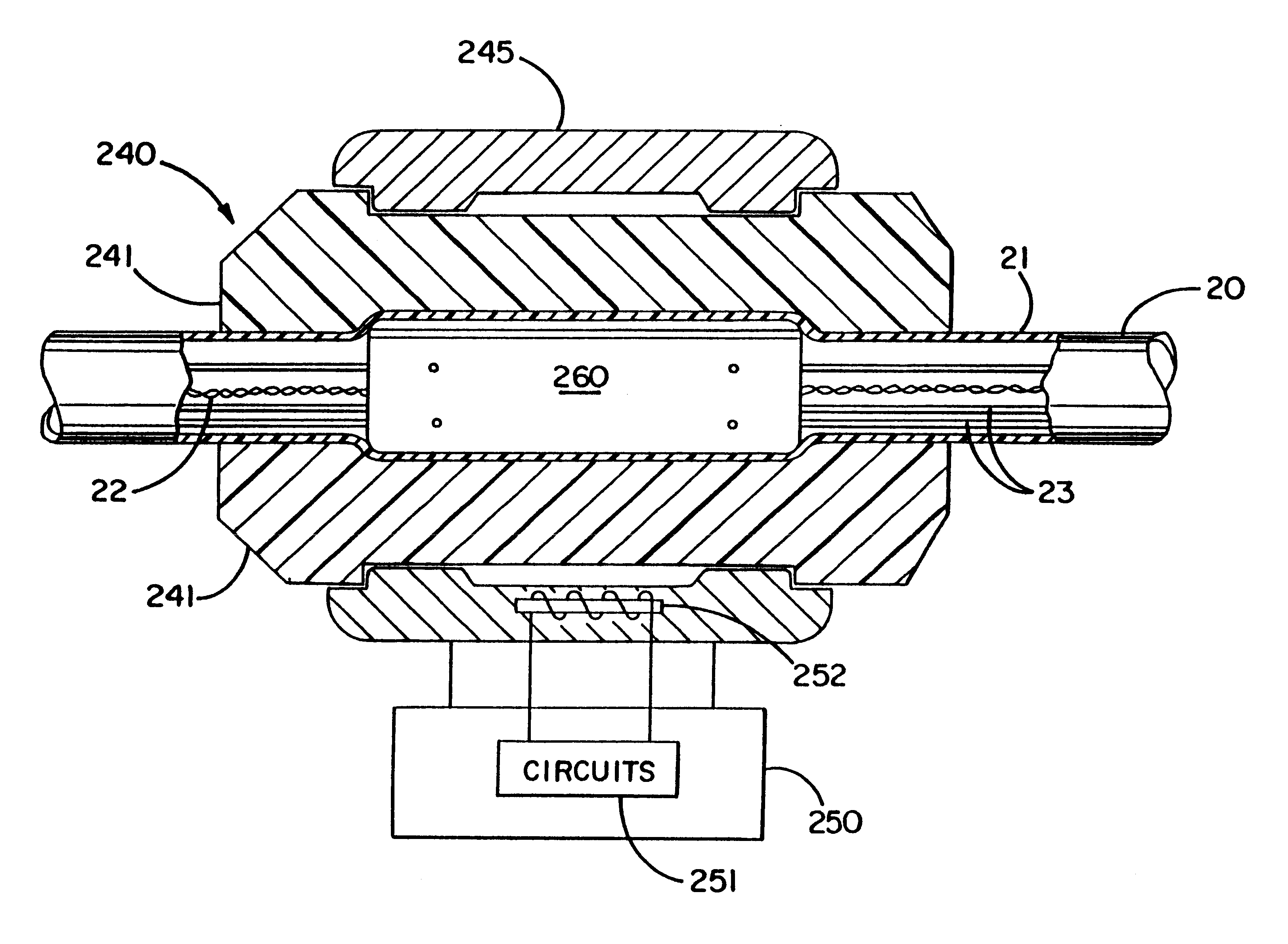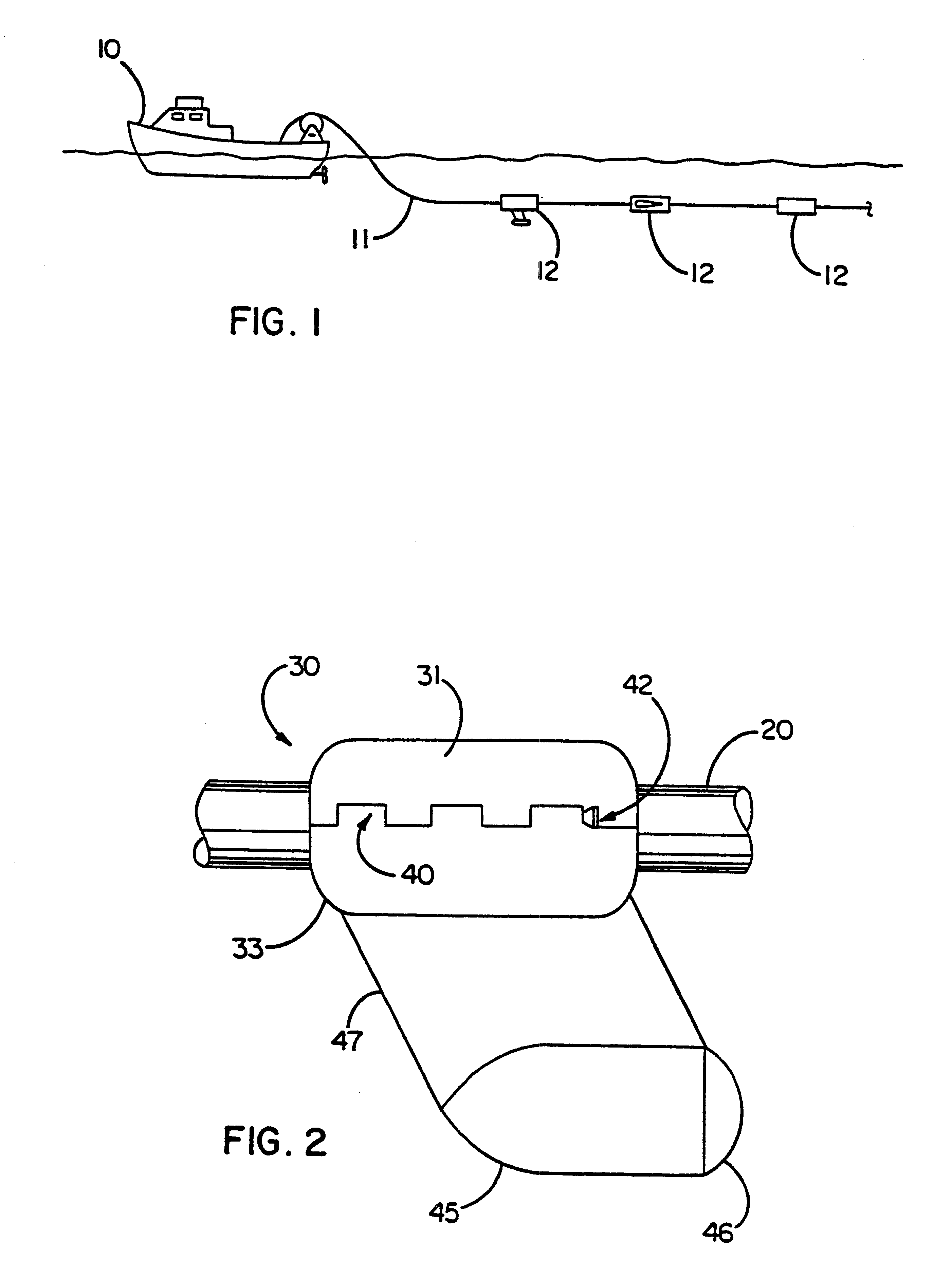Underwater cable arrangements, internal devices for use in an underwater cable, and methods of connecting and internal device to a stress member of an underwater cable
- Summary
- Abstract
- Description
- Claims
- Application Information
AI Technical Summary
Benefits of technology
Problems solved by technology
Method used
Image
Examples
Embodiment Construction
FIG. 1 schematically illustrates an example of an underwater cable arrangement according to the present invention. The arrangement includes an underwater cable 11 being towed through the water by a towing vessel 10, such as an ordinary surface vessel, although the cable 11 can also be towed by an underwater vessel or by an aircraft. One or more external devices 12 are attached to the underwater cable 11 at intervals along its length. For simplicity, only three external devices 12 are illustrated, but there is no restriction on the number or type of devices which are attached to the cable 11. In addition, although only a single cable 11 is shown, the towing vessel 10 may tow a plurality of cables simultaneously.
FIGS. 2 through 6 illustrate a first embodiment of an external device 30 which can be mounted on an underwater cable 20. FIGS. 2 and 3 show the external device 30 as it would appear when being towed through the water by the cable 20 to the left in the figures. The external dev...
PUM
 Login to View More
Login to View More Abstract
Description
Claims
Application Information
 Login to View More
Login to View More - R&D
- Intellectual Property
- Life Sciences
- Materials
- Tech Scout
- Unparalleled Data Quality
- Higher Quality Content
- 60% Fewer Hallucinations
Browse by: Latest US Patents, China's latest patents, Technical Efficacy Thesaurus, Application Domain, Technology Topic, Popular Technical Reports.
© 2025 PatSnap. All rights reserved.Legal|Privacy policy|Modern Slavery Act Transparency Statement|Sitemap|About US| Contact US: help@patsnap.com



